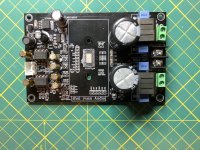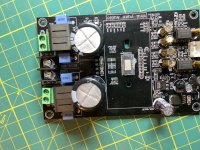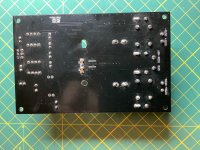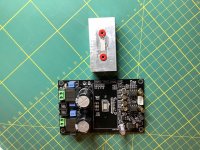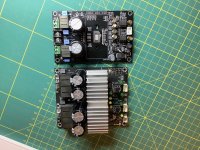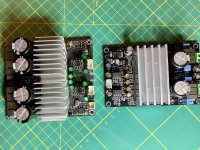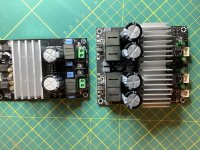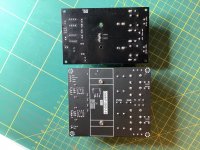Having just received my Shui Yuan Audio board I thought it would be a good idea to start a new thread specifically covering this board.
First impressions - It appears to be hand soldered - even the SMD ! Quality is OK but fairly basic given that it is less than 50% of the cost of its nearest competitor from 3e Audio. Capacitors are mostly Nichicon. Op-Amps are NE5532 but the pins seem to be quite tarnished ??
Will add some photos shortly
First impressions - It appears to be hand soldered - even the SMD ! Quality is OK but fairly basic given that it is less than 50% of the cost of its nearest competitor from 3e Audio. Capacitors are mostly Nichicon. Op-Amps are NE5532 but the pins seem to be quite tarnished ??
Will add some photos shortly
Mine is on it's way from from China, so I'm following along.
I currently use the 3e TPA3255 with no modifications and I am very content with it. I'm curious how it will compare
I currently use the 3e TPA3255 with no modifications and I am very content with it. I'm curious how it will compare
Hi! I received this card, I tested it yesterday on a 36 volt power supply.
For the price it is bluffing!
The sound balance is excellent, with the original op amp no pluck or other.
No breath!
I am going to order another for a multichannel project with replacement of the op by 1656! 🙂
For the price it is bluffing!
The sound balance is excellent, with the original op amp no pluck or other.
No breath!
I am going to order another for a multichannel project with replacement of the op by 1656! 🙂
OK, do you intend to make some updates like I did ?
Depends on whether my inventory can provide what's necessary for these modifications.
Also I struggle to find specific brand/type capacitors at my local shop, and hesitate to try my luck on Aliexpress when it comes to larger caps and if they're genuine or not.
Some pictures of the board with the heatsink removed.
Appears to be hand soldered !! The board follows the Texas Evaluation Circuit almost to the letter. The 12 volt power supply is a little different but otherwise all the components (and values) follow the reference design. The output inductors are 10uH and the output capacitors are 1uF. I can't remember what impedance of speaker this would be optimised for ?? The physical size of the inductors is very small !! - see later comparison with 3e-Audio board. I think some of the Breeze Audio amplifiers use these small inductors. There is no visible branding.
Picture of whole Board
Picture of Op-Amp end
Picture of Inductor end
Picture of the back of the board
.
.
Appears to be hand soldered !! The board follows the Texas Evaluation Circuit almost to the letter. The 12 volt power supply is a little different but otherwise all the components (and values) follow the reference design. The output inductors are 10uH and the output capacitors are 1uF. I can't remember what impedance of speaker this would be optimised for ?? The physical size of the inductors is very small !! - see later comparison with 3e-Audio board. I think some of the Breeze Audio amplifiers use these small inductors. There is no visible branding.
Picture of whole Board
Picture of Op-Amp end
Picture of Inductor end
Picture of the back of the board
.
.
Attachments
Last edited:
Some more photos and comparison of the Shui Yuan board with 3e-Audio TPA3255 Amplifier board.
5. Details of Heatsink. Just spaced away from the PCB with two fibre washers.
6. Comparison of the Shui Yuan board v 3e-Audio board.
7. Comparison of the Op-Amps - Both boards have their original Op-Amps installed.
8. Comparison of the Inductors - The Shui Yuan inductors are tiny. Unlikely these would allow the full capability of the board to be realised due to current limitations. There are no manufacture names on the inductors so no specification !!?? Also note the PCB tracks on this board are small. I don't know what the weight of the copper tracks are on the PCB but they seem quite thin compared to other boards.
9. Comparison of the back of the two boards. Clearly see the hand soldering of the Shui board compared with the Automated Solder Flow of the 3e-Audio board. The excess leads of the through hole components have been hand trimmed. Does make you wonder who manufactures this board and what quantities will be available.
I think it is quite clear from a manufacturing quality point of view what you get by paying more for the 3e-Audio board.
Just need to find the time now to get these wired up for some listening !!
.
.
5. Details of Heatsink. Just spaced away from the PCB with two fibre washers.
6. Comparison of the Shui Yuan board v 3e-Audio board.
7. Comparison of the Op-Amps - Both boards have their original Op-Amps installed.
8. Comparison of the Inductors - The Shui Yuan inductors are tiny. Unlikely these would allow the full capability of the board to be realised due to current limitations. There are no manufacture names on the inductors so no specification !!?? Also note the PCB tracks on this board are small. I don't know what the weight of the copper tracks are on the PCB but they seem quite thin compared to other boards.
9. Comparison of the back of the two boards. Clearly see the hand soldering of the Shui board compared with the Automated Solder Flow of the 3e-Audio board. The excess leads of the through hole components have been hand trimmed. Does make you wonder who manufactures this board and what quantities will be available.
I think it is quite clear from a manufacturing quality point of view what you get by paying more for the 3e-Audio board.
Just need to find the time now to get these wired up for some listening !!
.
.
Attachments
Last edited:
😉oddly ... it seems to heat up less than the 3 audio ...
This is really a must have this board !!!
Enjoy!!!
This is really a must have this board !!!
Enjoy!!!
Last edited:
Mine is on it's way from from China, so I'm following along.
I currently use the 3e TPA3255 with no modifications and I am very content with it. I'm curious how it will compare
Just out of interest, what version of the 3e-Audio board do you have. I have the later version with the sockets for the Op-Amps.
I don't know whether 3e-Audio sorted out the overheating problem that we see reported when running this board on higher voltages (48 volts).
bushellj > did you finally find your case ?
Amigos > I got another unknown TPA3255 module, I will share my review VS the Shui Yuan )
Amigos > I got another unknown TPA3255 module, I will share my review VS the Shui Yuan )
I am struggling to find a case where the shipping costs to the UK are not 3x or 4x the cost of the case on AliExpress !!
Lots of nice cases but I am not paying $50 just to ship !!
Hopefully the shipping costs will settle down now the Chinese are back at work !
.
.
Lots of nice cases but I am not paying $50 just to ship !!
Hopefully the shipping costs will settle down now the Chinese are back at work !
.
.
I am struggling to find a case where the shipping costs to the UK are not 3x or 4x the cost of the case on AliExpress !!
Lots of nice cases but I am not paying $50 just to ship !!
In the USA Amazon is not bad for shipping cost, check UK Amazon...
JIUWU 125x51x150mm Aluminum Box DIY Project Enclosure Surface Drawing Process Split Case for PCB Audio Amplifier Power Supply, $16.99 FREE Shipping: https://www.amazon.com/JIUWU-125x51x150mm-Aluminum-Enclosure-Amplifier/dp/B07KYDVH4T
JIUWU Silver Surface Drawing Process Split Aluminum Enclosure Electronic Project Box Case for PCB Instrument Amplifier DIY, 100x88x38mm (LWH) $10.99 FREE Shipping: https://www.amazon.com/JIUWU-Aluminum-Enclosure-Electronic-88x38x100mm/dp/B07HBWLZDQ
Eightwood Aluminum Electronic Project Box Enclosure Split Body Case DIY 4.72 x 3.82 x 1.57 inch (LxWxH) $12.99 FREE Shipping: https://www.amazon.com/Eightwood-Aluminum-Electronic-Enclosure-DIY-4-72/dp/B010DHQPVW
Some more photos and comparison of the Shui Yuan board with 3e-Audio TPA3255 Amplifier board.
5. Details of Heatsink. Just spaced away from the PCB with two fibre washers.
6. Comparison of the Shui Yuan board v 3e-Audio board.
7. Comparison of the Op-Amps - Both boards have their original Op-Amps installed.
8. Comparison of the Inductors - The Shui Yuan inductors are tiny. Unlikely these would allow the full capability of the board to be realised due to current limitations. There are no manufacture names on the inductors so no specification !!?? Also note the PCB tracks on this board are small. I don't know what the weight of the copper tracks are on the PCB but they seem quite thin compared to other boards.
9. Comparison of the back of the two boards. Clearly see the hand soldering of the Shui board compared with the Automated Solder Flow of the 3e-Audio board. The excess leads of the through hole components have been hand trimmed. Does make you wonder who manufactures this board and what quantities will be available.
.
.
here the spec of the Shui Yuan :
A small 110*70*35MM PCB
SAGAMI 7W14A inductors
Nichicon 2200UF/63V VZ serie power caps
Nichicon FW serie Buffer caps
TDK / Epcos fil caps (to confirm)
DIP8 OP amps socket
About inductors :
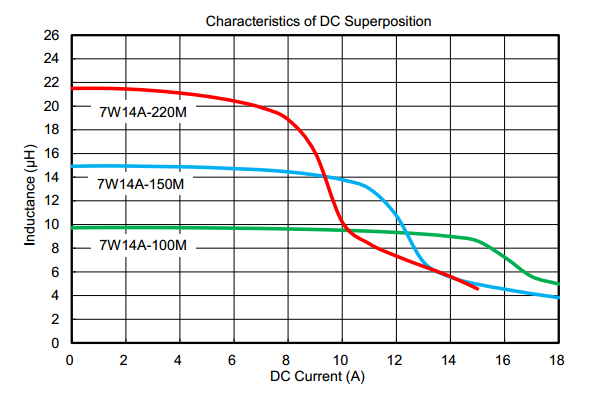
Last edited:
Just out of interest, what version of the 3e-Audio board do you have. I have the later version with the sockets for the Op-Amps.
I don't know whether 3e-Audio sorted out the overheating problem that we see reported when running this board on higher voltages (48 volts).
I have the latest version and I can say that the heatsink gets very toasty on mine too.
So you can compare, The 3E Audio is using the same brand for the Inductors but the model is different : Sagami 7G17C (100M)
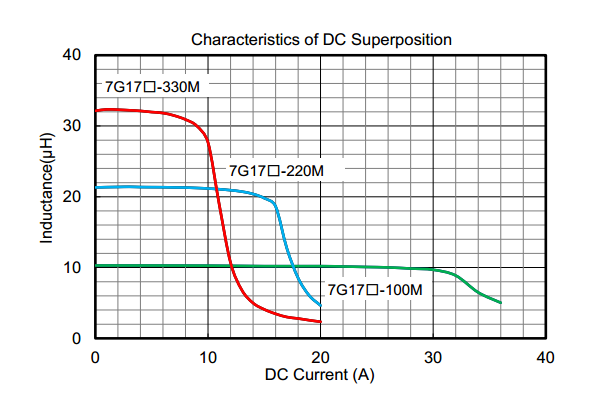

Last edited:
oddly ... it seems to heat up less than the 3 audio ...
This is really a must have this board !!!
Enjoy!!!
Well, if you have two amplifiers with the same chip and thus same idle current/dissipation, you´d ideally have similar temperatures (if heatsinks are of similar size)!
If one heatsink is colder than the other (assuming there is no oscillation/defect), what does it mean? It means the connection between chip and heatsink is not of low thermal resistance and so not very well "executed".
It also means the chip runs hotter on the amp with the cold heatsink.
Most of these class-d amplifiers have great value, don´t get me wrong but these are not manufactured to the 1/10th of a [mmm] and thus you can expect relatively high thermal resistances between chip and heatsink.
I would definitely take the amp with the hotter heatsink (again assuming there is no oscillation or similar).
- Home
- Amplifiers
- Class D
- Shui Yuan Audio TPA3255 Modification Thread
